Our Blog - Loire Valley Trip - Chateau Montpoupon, France
An interesting name for this chateau, reminded me of the TV ads for Grey Poupon mustard. Alas, there is no link that I am aware of. At the time of Charlemagne around the 9th century, there was a Germanic clan called the Poppo who lived here, and it was originally called Mons Poppo (meaning the hill of the Popponide clan). It evolved to Mons Popeo, then to Mont Poupon, and finally to Montpoupon. In the Middle Ages, a castle was built here which changed hands several times. eventually passing into the House of Amboise through a marriage to the House of Prie around 1430. They replaced the castle with a comfortable early Renaissance residence. In the early-1500s, the elegant 2-story gatehouse with turrets was built. It again passed through quite a few hands, with several generations of owners not actually living here. At times, they rented the land to farmers, who ended up living in the house. Since the middle of 19th century, the castle has belonged to the Motte Saint Pierre family.
When Jean-Baptiste-Léon de la Motte Saint-Pierre bought the property in 1857, he restored the chateau to the Renaissance appearance that it has today. In the 1870's, his son took over and founded an "equipage", or a hunting dog team and started having deer hunts on the property.
There is an interesting audioguide (in French) that walks you through the rooms with a discussion between the next owner, Bernard de la Motte Saint-Pierre, and his daughter, Solange. Bernard took over the property in 1912 but then went to fight in World War I, leaving his wife Thérèse to mind the estate. When he returned, he undertook major modernization works including installing electricity, running water, and central heating. Solange took over the chateau in 1956 and opened it to the public in 1971. It is still owned by the same family, who live in one part of the chateau.
Here from the outside, you can see the 2-story gatehouse, the main residence, and an older round tower.
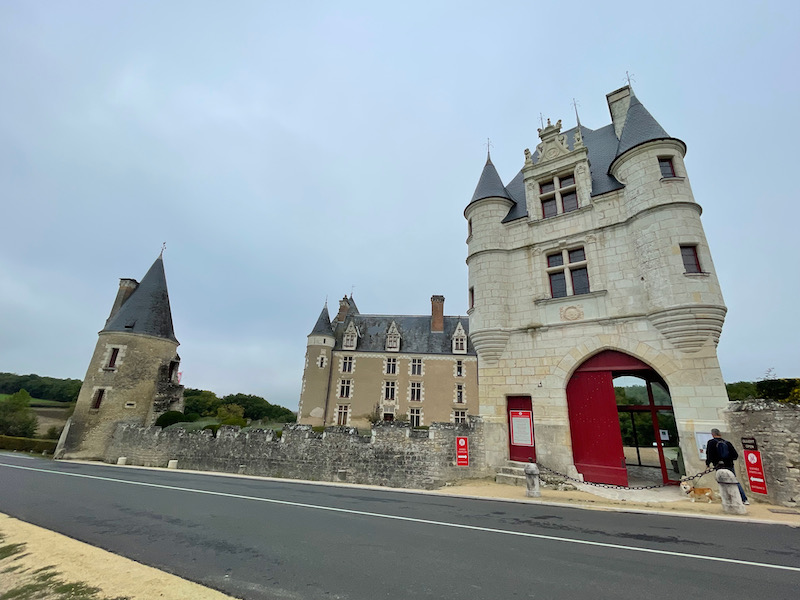
The 16th century gatehouse replaced the original fortified gate, portcullis, and drawbridge. The look is very Italian, since the owner at the time had gotten inspiration from the Italian Renaissance after having fought in the Italian Wars with the King of France.
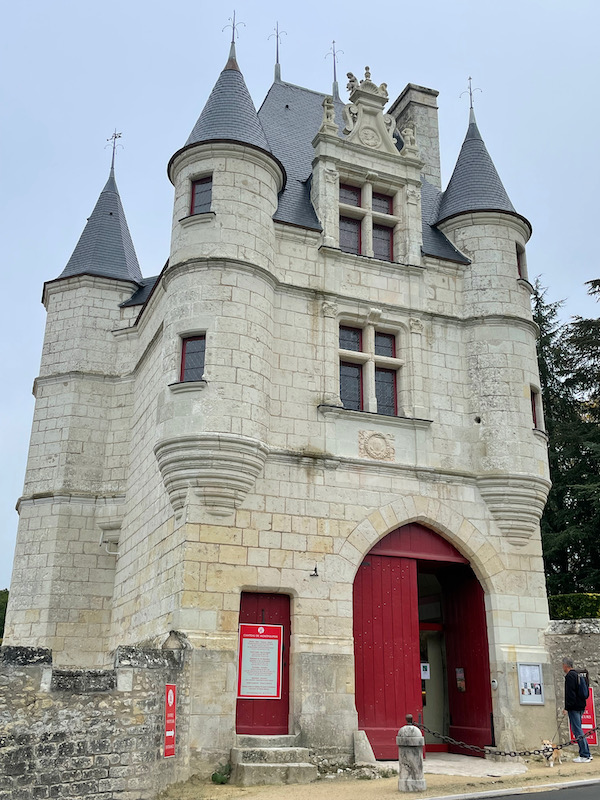
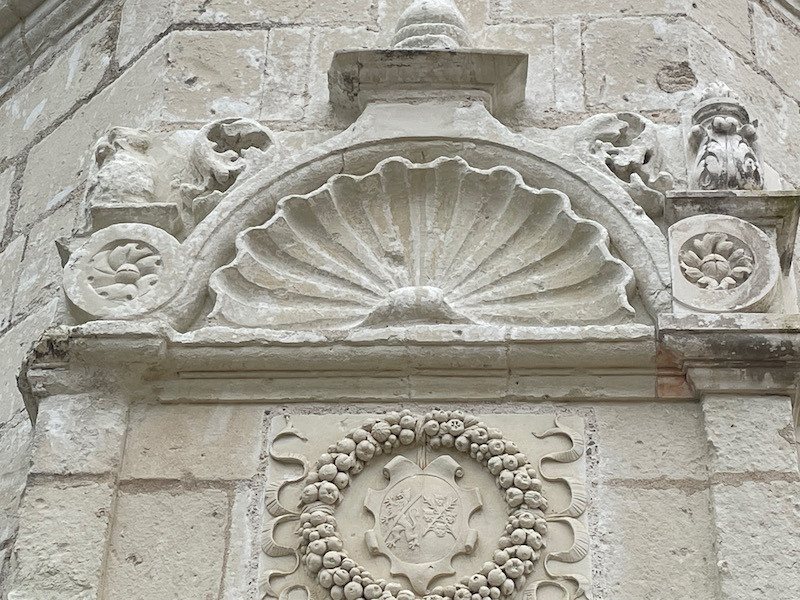
The first floor was used as a bedroom in the late 1800s, partly because it could be heated easily. When Bernard died, it was turned into a library. The top floor was changed into a small chapel in 1875 after the previous chapel was destroyed during the French Revolution. The stones on the floor are actually fragments from the 16th century frescoes from the old chapel.
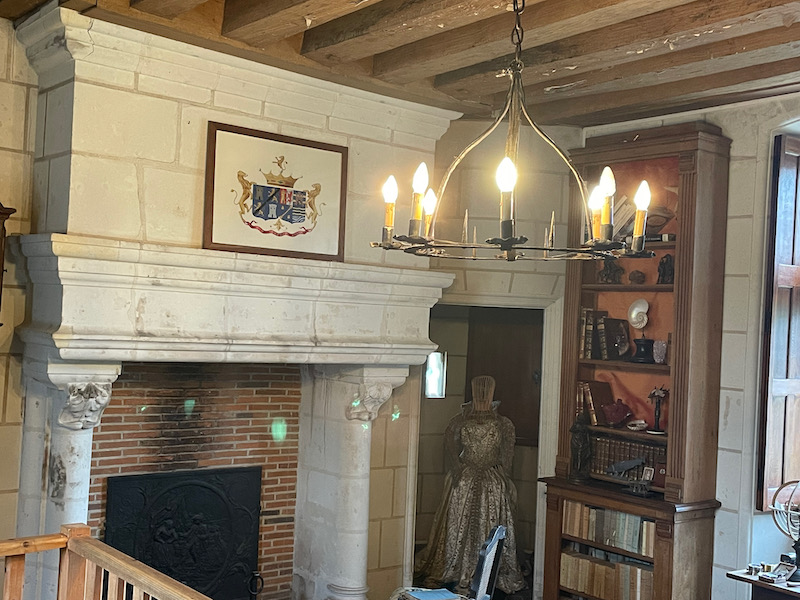
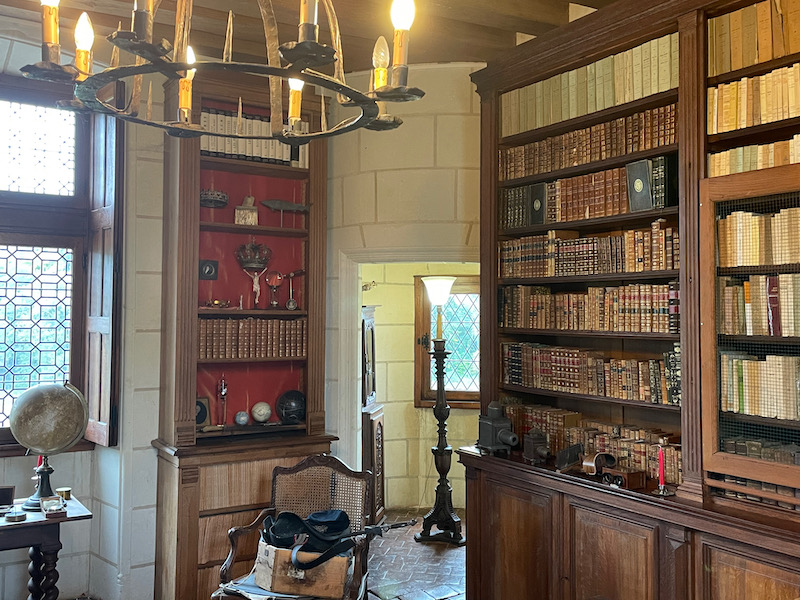
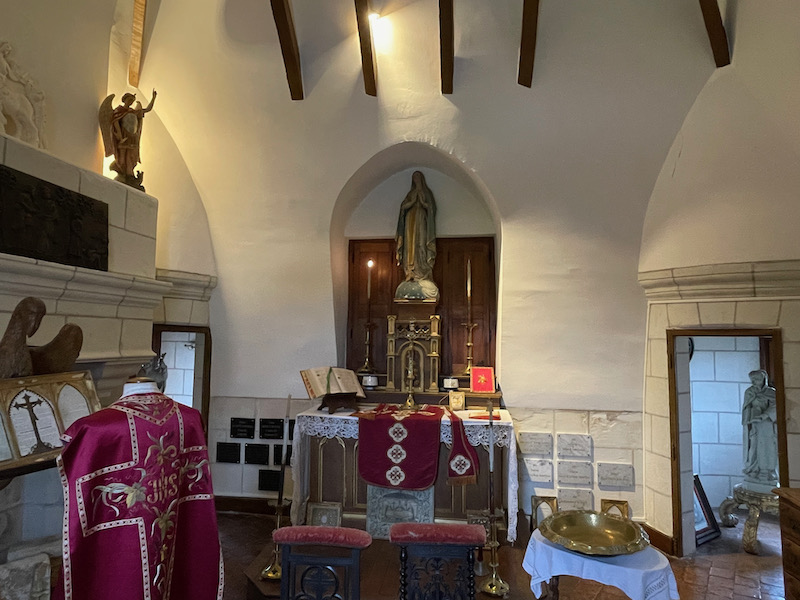
Here we have the main residence that the Motte Saint-Pierre family bought and restored. I tried to get a closeup of a few of the decorations on the outside.
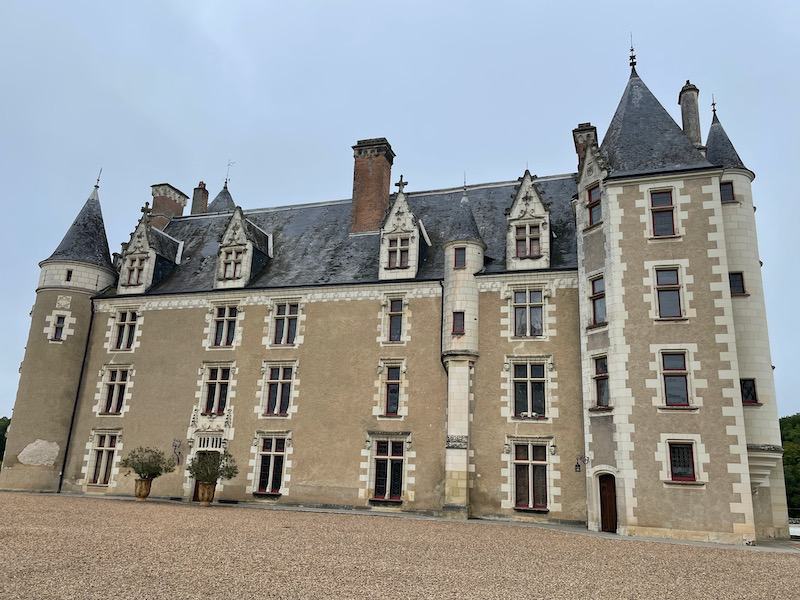
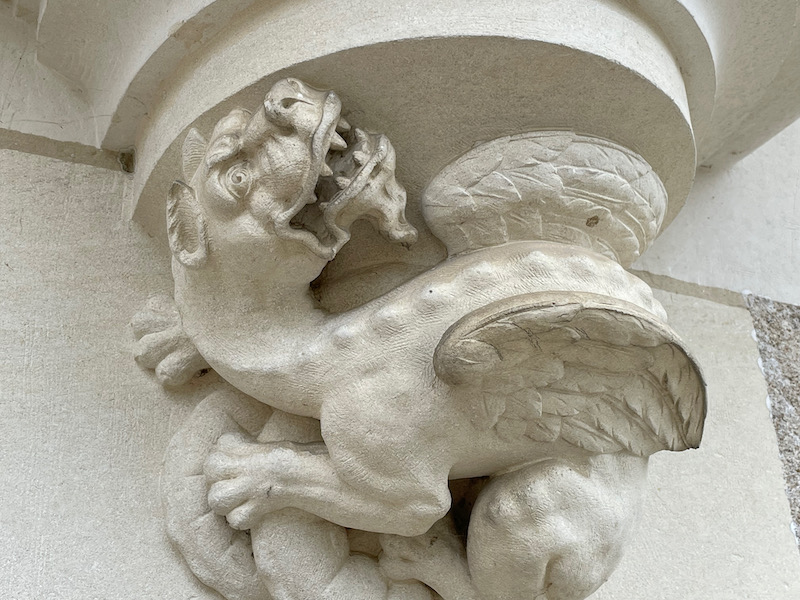
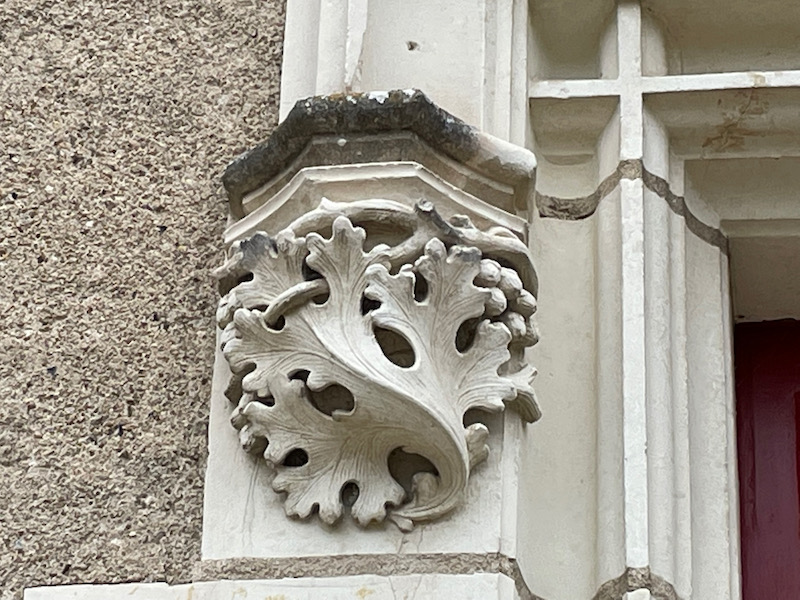
You could walk through about 11 or 12 rooms, and there was information (in both French and English) for each of the rooms. Here we have the first room, the Amboise Hall. The "A" on the fireplace represents the Lords of Amboise. The red beams were hidden for 200 years under a false ceiling and only discovered in 1919 when electricity was installed.
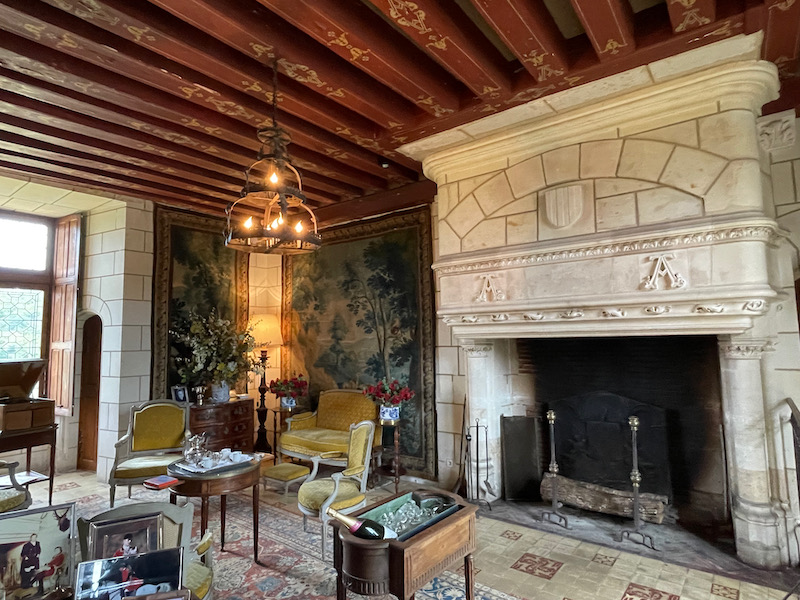
While this room is now the dining room, it used to be a bedroom. The beams in the ceiling, which are grey, are called "mourning beams", and come from Queen Louise de Lorraine, who used black and grey in her chamber in Chateau de Chenonceau to express mourning after she lost her husband, King Henri III.
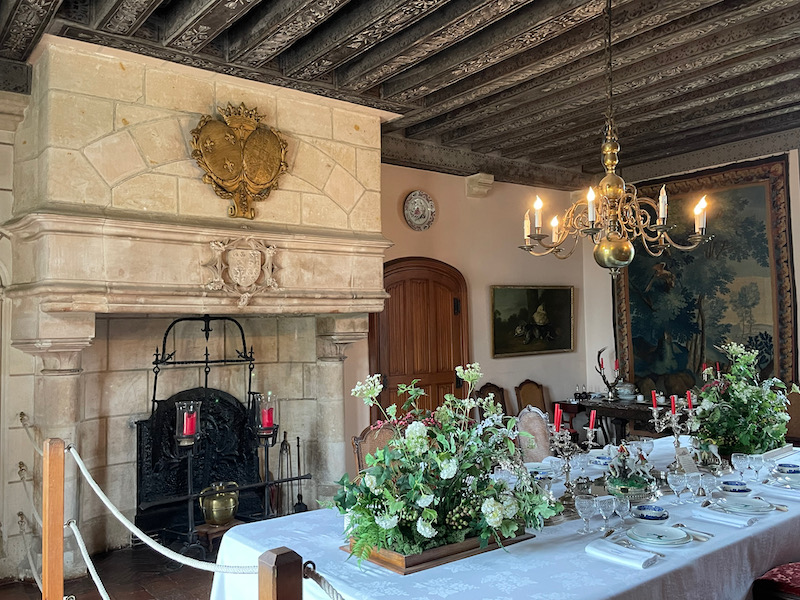
As we have seen with a couple of the chateaus, there are normally rooms set aside for the King (and his entourage) when he would visit the various Lords under his control. This room is called the Kings Bedroom and would be reserved for the King, in case he decided to drop by for a visit. The colored beams date from the 16th century and are made of Chestnut, which is known to repel insects and so it would prevent damage to the other wood furniture.
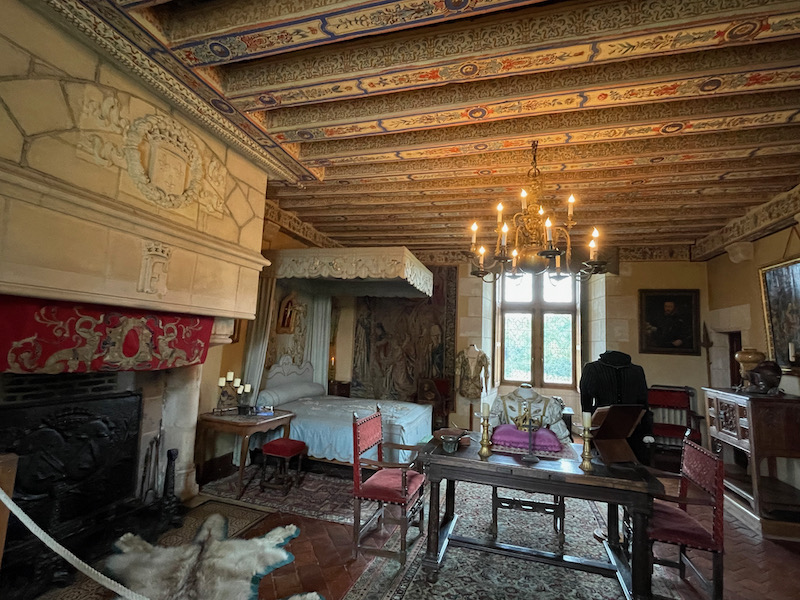
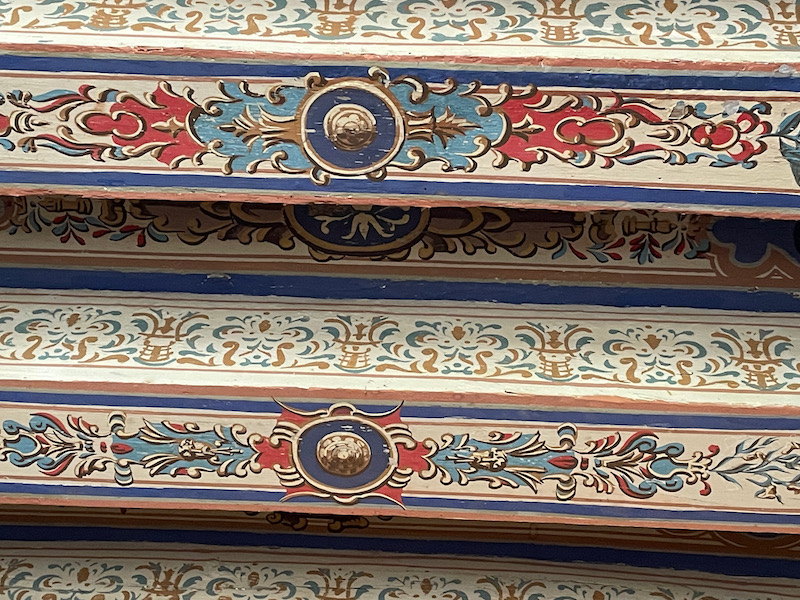
This next bedroom is interesting for a few things. First, the canopy bed dates from the reign of Louis XIII (1610-1643). The 19th century carved-stone fireplace portrays ladies with their coats of arms, which was typical of medieval fireplaces. Lastly, the bathroom has all of the comforts available at the start of the 20th century.
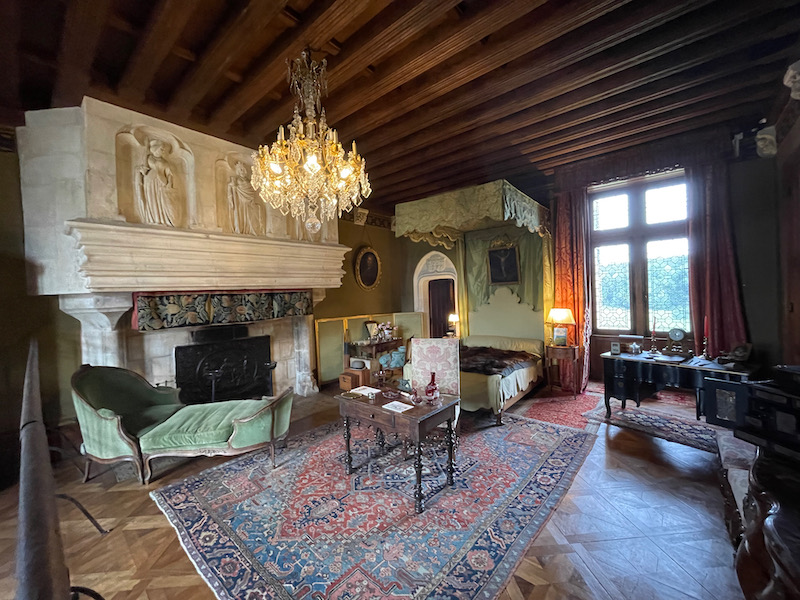
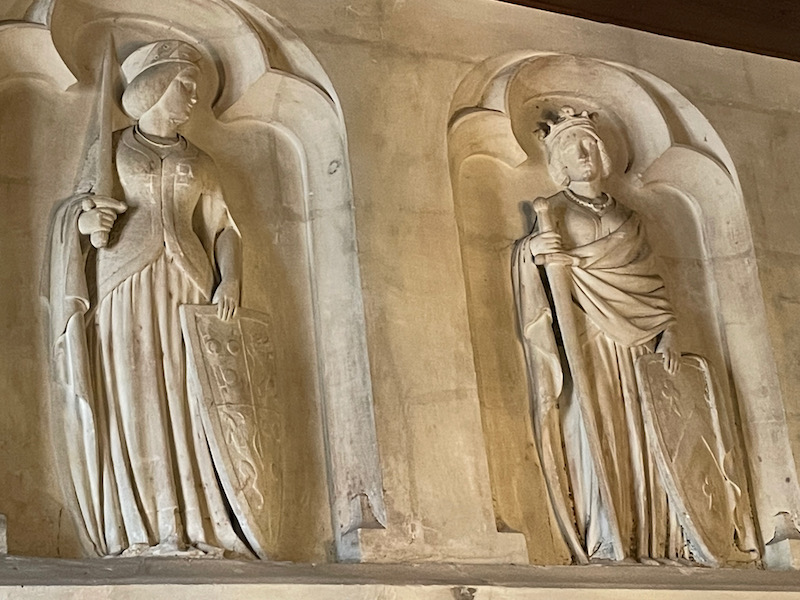
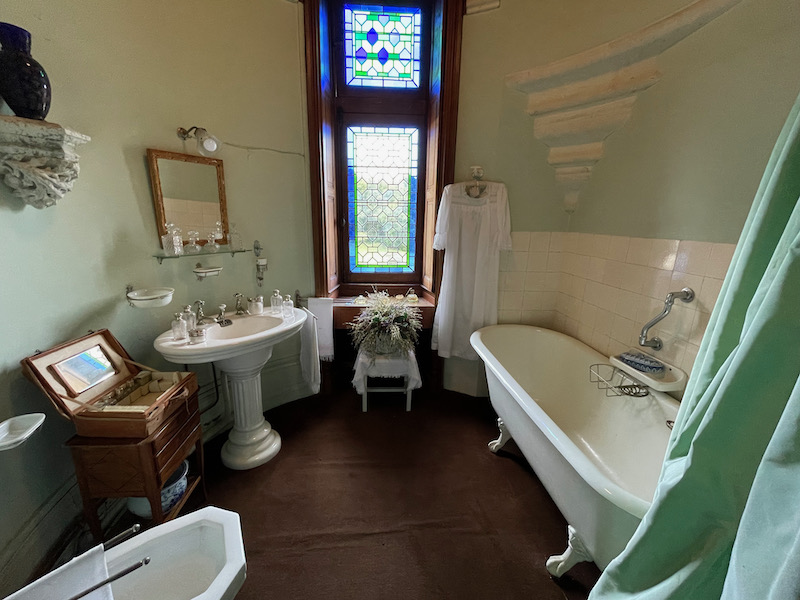
The kitchen is around back in the little flat building. It was installed in the 19th century and remained in use until 1977. The stove, which burned both wood and coal, dates from 1880. They had a dishwasher installed in 1901.
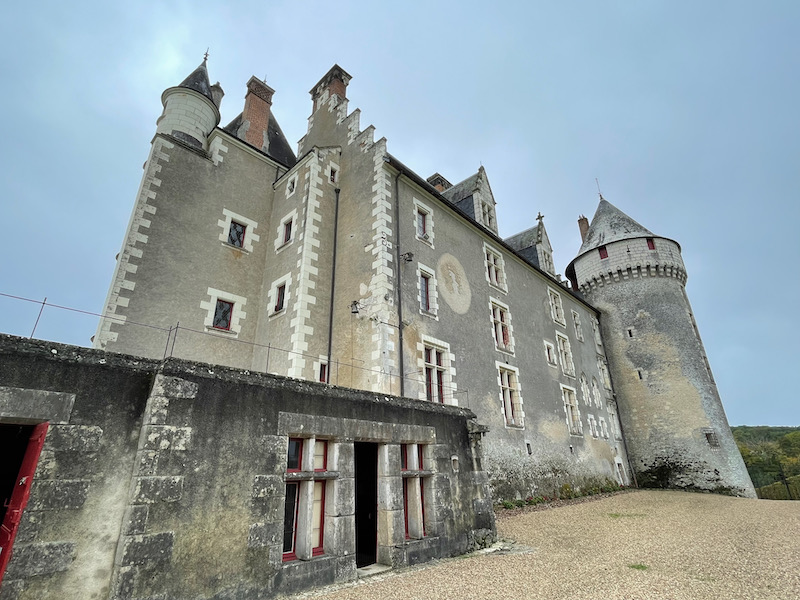
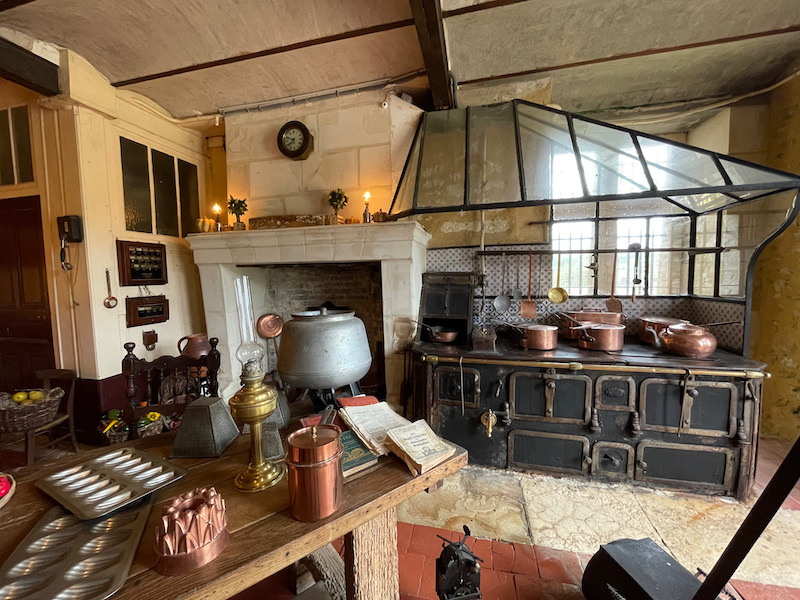
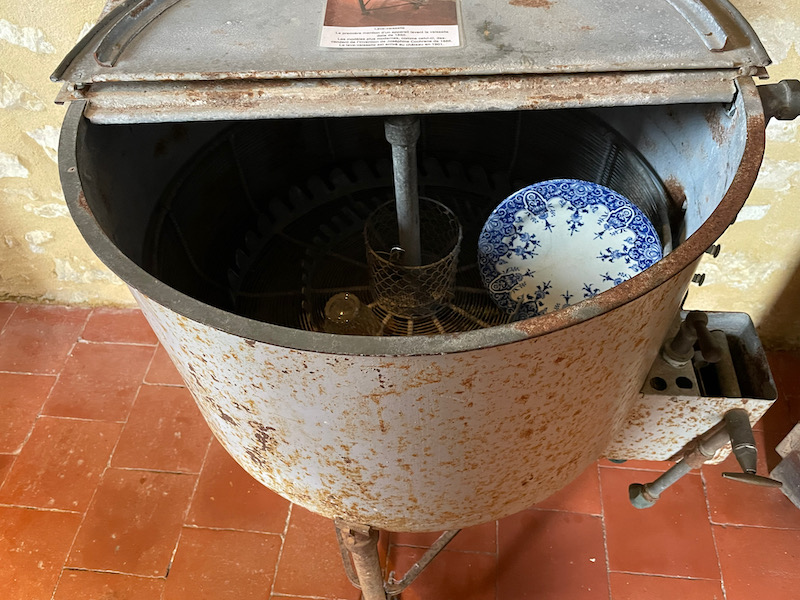
I mentioned that the audioguide contains a conversation between Bernard and his daughter, Solange. She was born in the castle in 1916 and spent her early childhood here. She was quite intelligent, studying in Paris and earning a law degree in 1939. She went on to study at the Louvre School before moving back to the chateau during World War II. She was an avid horse rider and rode until she was 70. She was the one who opened the chateau to the public.